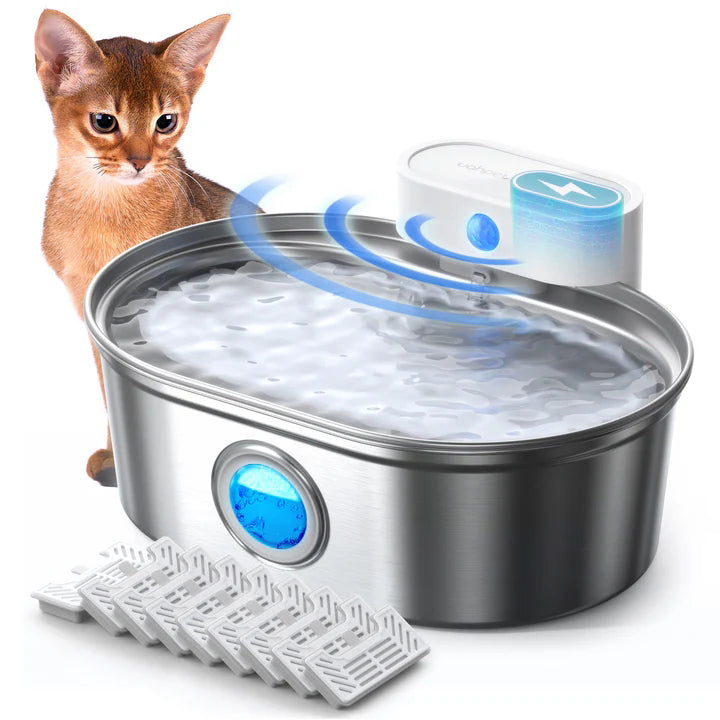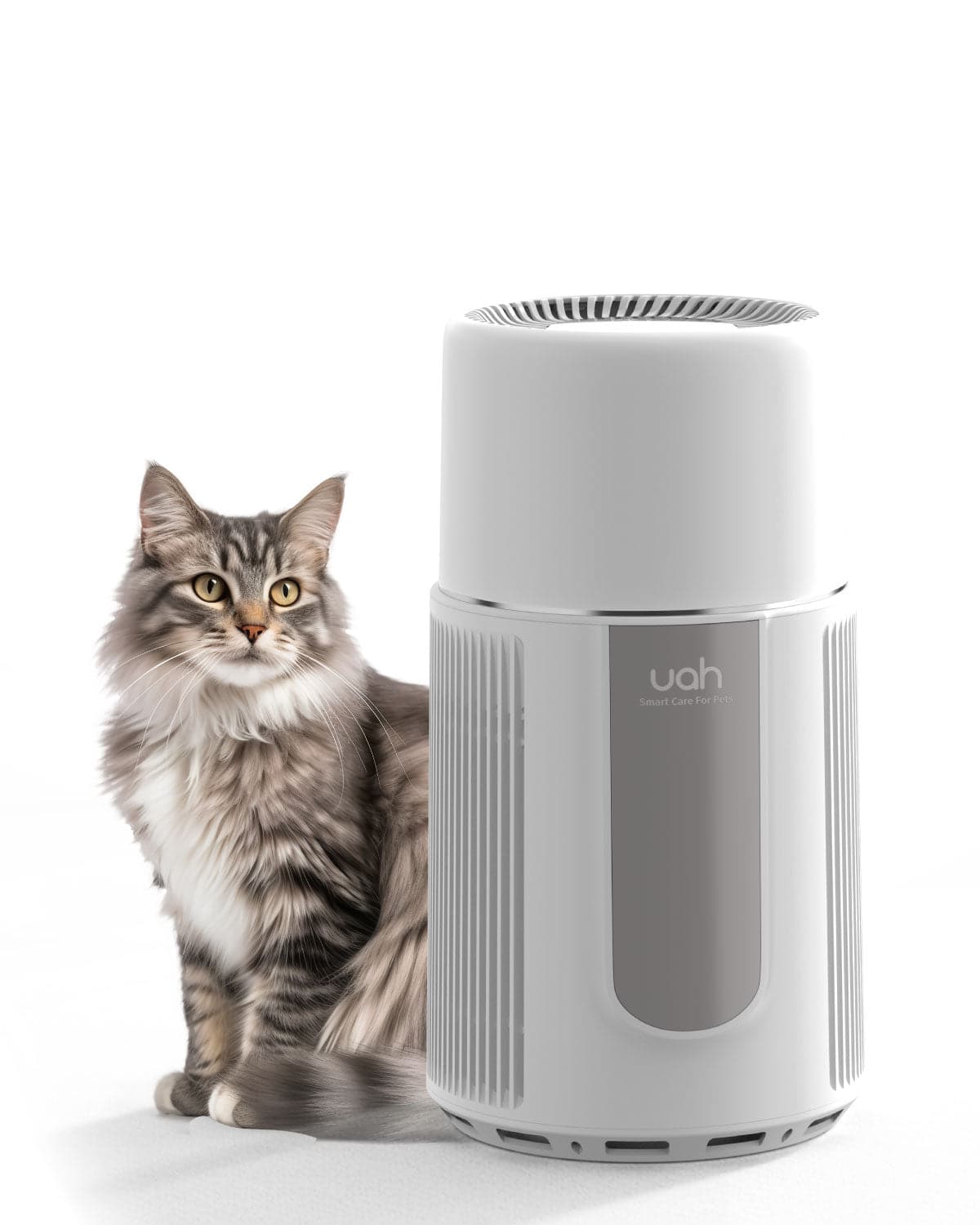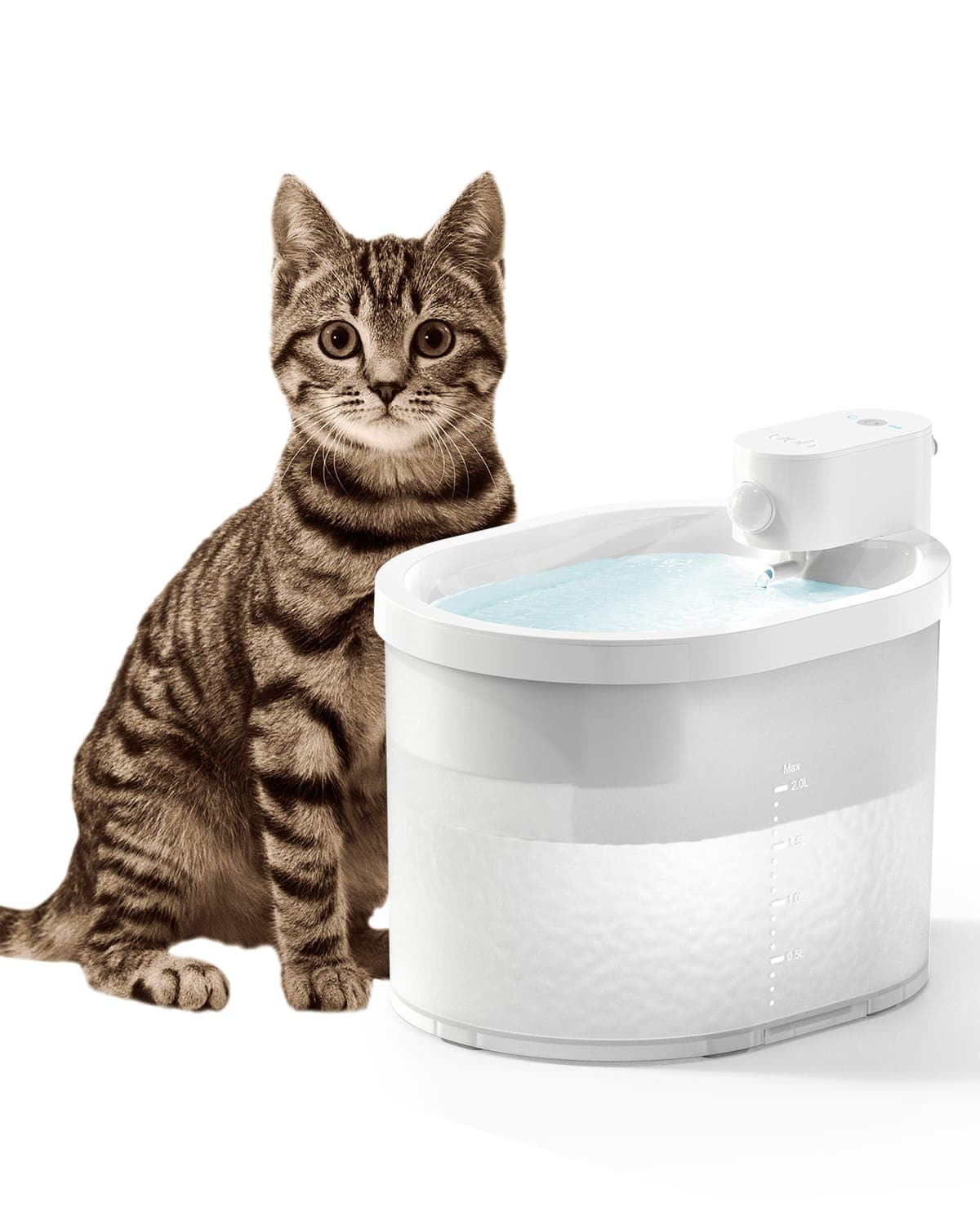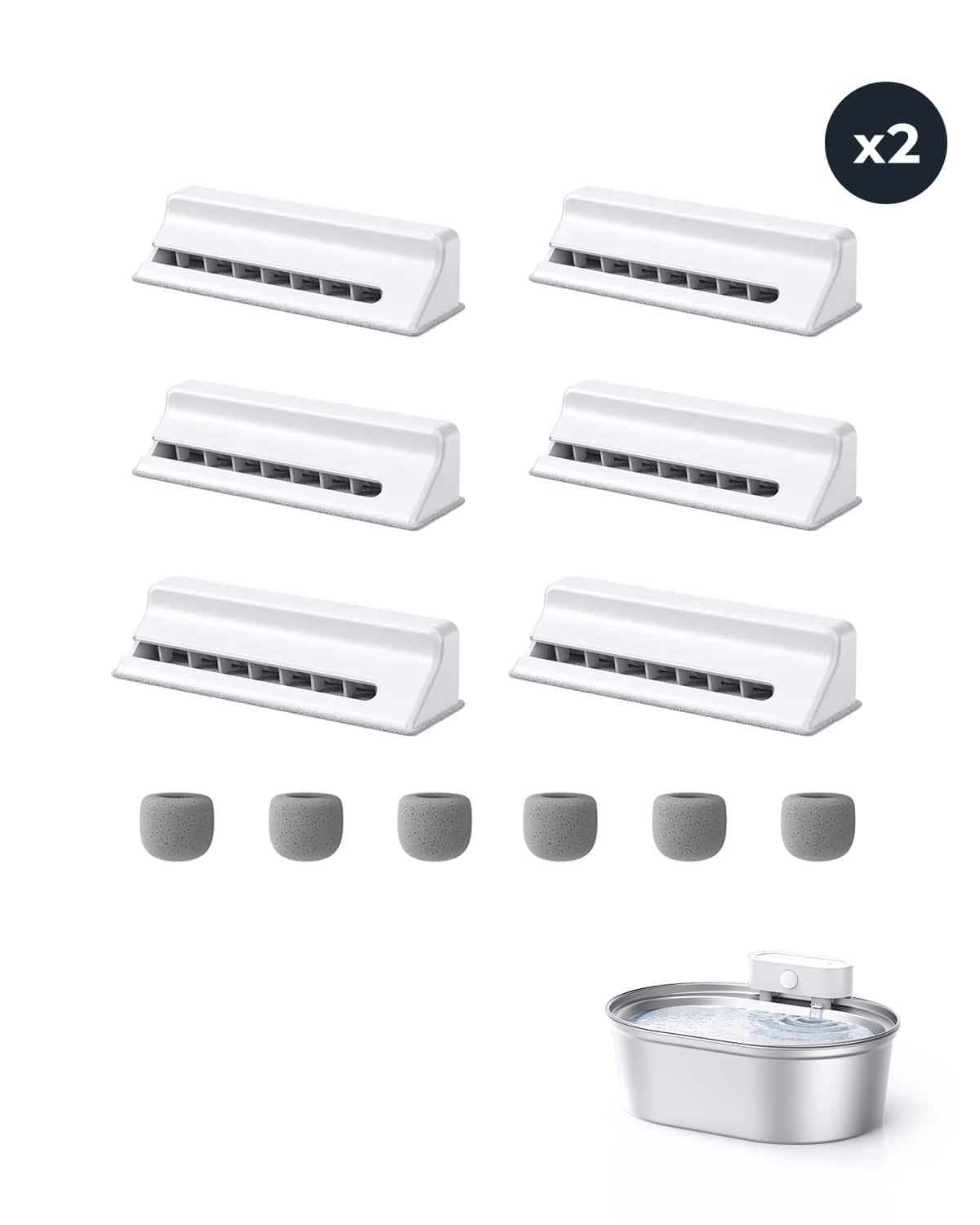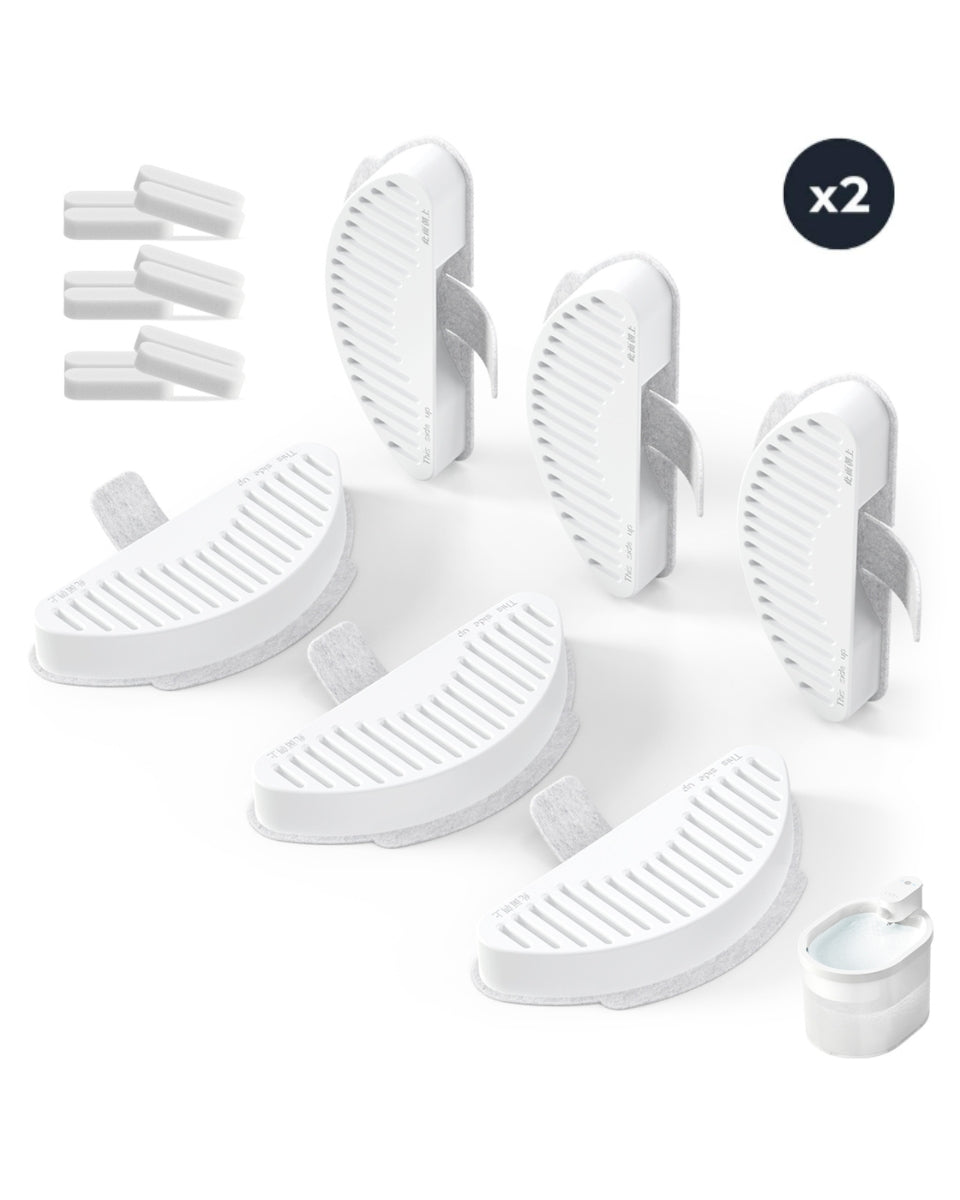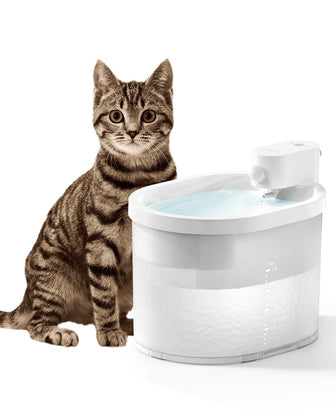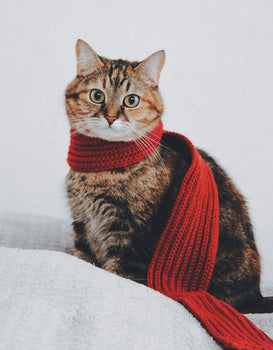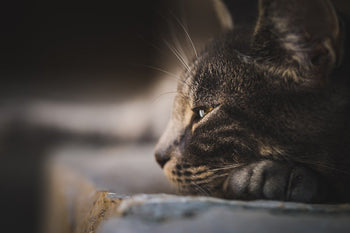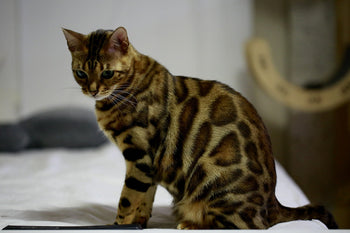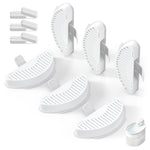Why Your Cat Water Fountain Gets Slimy?
Cats are known to be finicky creatures, and providing them with fresh water is essential for their health and well-being. Many cat owners opt for water fountains to encourage their pets to drink more water, but they may notice a slimy buildup in the fountain over time. This can be concerning for pet owners, as they may wonder if it poses a health risk to their furry friends.
Understanding the slimy buildup in cat water fountains requires a basic knowledge of the science behind it. The slimy substance is most likely biofilm, which consists of bacteria and other microorganisms that form a sticky layer on surfaces. In cat water fountains, the biofilm can accumulate on the pump, filter, and other parts of the fountain, leading to a slimy texture and unpleasant odor.
While the slimy buildup in cat water fountains may not pose an immediate health risk to pets, it can affect the taste and quality of the water. Additionally, the bacteria and other microorganisms in the biofilm can potentially cause health problems for cats with weakened immune systems. Therefore, taking preventive measures to keep the fountain clean and free of biofilm is crucial for pet owners.
Key Takeaways
Biofilm is the likely culprit behind the slimy buildup in cat water fountains.
The slimy buildup may affect the taste and quality of the water, and can potentially pose health risks to cats with weakened immune systems.
Regular cleaning and maintenance of the fountain can help prevent the buildup of biofilm.
Understanding the Slimy Buildup
A common problem with cat water fountains is the buildup of slimy residue. This can be a frustrating issue for pet owners, as it not only looks unsightly but can also be a breeding ground for bacteria and other harmful microorganisms. Understanding the factors contributing to the buildup and the thriving environment for slime can help pet owners prevent and manage the problem.
Factors Contributing to Buildup
Several factors can contribute to the buildup of slimy residue in cat water fountains. One of the most common causes is the presence of organic matter, such as food particles or saliva, in the water. When left stagnant, this organic matter can provide a food source for bacteria and other microorganisms, leading to slimy buildup.
Another factor that can contribute to the problem is the type of water used in the fountain. Hard water, which contains high levels of minerals like calcium and magnesium, can leave behind deposits that contribute to slimy buildup. Additionally, water that is not changed frequently enough can become stagnant and promote the growth of bacteria and other microorganisms.
Thriving Environment for Slime
Slime thrives in warm, damp environments, which is why cat water fountains can be an ideal breeding ground. The circulating water in the fountain creates a moist environment that is perfect for the growth of bacteria and other microorganisms. Additionally, the warm temperature of the water can further promote the growth of slime.
To prevent the buildup of slimy residue in cat water fountains, pet owners should regularly clean the fountain and change the water frequently. Using filtered water can also help to reduce the presence of minerals and other contaminants that can contribute to the problem.
Related Posts:
Health Risks

Risks of Slimy Water
A slimy water fountain can pose health risks to your cat. The slime is usually caused by bacteria and algae that thrive in warm and moist environments. When your cat drinks from a slimy water fountain, they may ingest harmful bacteria and toxins, which can lead to various health problems such as vomiting, diarrhea, and even infections.
Moreover, if the slimy water fountain is not cleaned regularly, it can become a breeding ground for harmful bacteria that can cause serious illnesses such as leptospirosis, salmonella, and E. coli. These illnesses can be life-threatening, especially for kittens, senior cats, and cats with weakened immune systems.
Importance of Hygiene
To prevent health risks associated with slimy water fountains, it is crucial to maintain good hygiene practices. This includes cleaning the water fountain regularly with a pet-safe disinfectant and replacing the water every day. It is also recommended to use filtered water to reduce the risk of contaminants.
Regular cleaning and maintenance of the water fountain can prevent the buildup of bacteria and algae, thus keeping your cat healthy and hydrated. In addition, it is essential to monitor your cat's water intake and seek veterinary care if you notice any changes in their drinking habits or behavior.
Related Posts:
Preventive Measures
Prevention Tips
To prevent slimy buildup in your cat's water fountain, it's important to regularly clean and maintain it. Here are some tips to help prevent slimy buildup:
Change the water frequently: Stagnant water can quickly become a breeding ground for bacteria and algae, which can lead to slimy buildup. Change the water in your cat's fountain at least once a day, or more often if necessary.
Use filtered water: Tap water can contain minerals and other impurities that can contribute to slimy buildup. Using filtered water can help reduce the amount of buildup in your cat's fountain.
Keep the fountain in a cool, shaded area: Direct sunlight can promote the growth of algae, which can lead to slimy buildup. Keeping the fountain in a cool, shaded area can help prevent this.
Cat-Friendly Cleaning
Regular cleaning is essential for preventing slimy buildup in your cat's water fountain. However, it's important to use cat-friendly cleaning products to avoid exposing your cat to harmful chemicals. Here are some tips for cleaning your cat's water fountain:
Use a mild dish soap: Avoid using harsh chemicals or bleach to clean your cat's fountain. Instead, use a mild dish soap and warm water to clean the fountain and its components.
Clean the fountain regularly: Aim to clean the fountain at least once a week, or more often if necessary. This will help prevent slimy buildup and keep the water fresh and clean for your cat.
Rinse thoroughly: After cleaning the fountain, be sure to rinse it thoroughly to remove any soap residue. Soap residue can be harmful to your cat if ingested.
Related Posts:
Conclusion
Why choose Uahpet cat water fountain?
The Uahpet cat water fountain is a top-rated product that offers several features to ensure clean and fresh water for your feline friend. Here are some reasons why you should consider choosing the Uahpet cat water fountain:
The fountain has a triple filtration system that includes a high-density PP cotton filter, activated carbon filter, and ion exchange resin filter. This filtration system effectively removes impurities and odors from the water, ensuring that your cat drinks clean and fresh water.
The fountain has a large water capacity of 2.5 liters, which means that you don't have to refill it frequently.
The fountain has a quiet pump that ensures your cat is not disturbed while drinking water.
The fountain has a unique design that encourages your cat to drink more water, which is essential for their health and well-being.
Overall, the Uahpet cat water fountain is an excellent choice for cat owners who want to ensure that their feline friend drinks clean and fresh water. With its triple filtration system, large water capacity, and unique design, the Uahpet cat water fountain is a top-rated product that can prevent slimy buildup and keep your cat healthy and hydrated.
Frequently Asked Questions
How can I prevent mold growth in my cat's water fountain?
Mold growth in cat water fountains can be prevented by cleaning the fountain regularly and ensuring that it is completely dry before refilling it with water. Consider using a fountain with a removable pump for easy cleaning. It is also recommended to use a water fountain with a filter to reduce the risk of mold growth.
What are the best cleaning practices for a stainless steel cat water fountain?
Stainless steel cat water fountains should be cleaned regularly with warm water and soap. Avoid using abrasive cleaners that can scratch the surface of the fountain. It is also recommended to clean the pump and filter regularly to prevent mold growth.
How often should I clean a ceramic cat water fountain to avoid sliminess?
Ceramic cat water fountains should be cleaned at least once a week to prevent sliminess and mold growth. Use warm water and soap to clean the fountain and ensure that it is completely dry before refilling it with water.
Are there any cat water fountains that are less prone to biofilm buildup?
Some cat water fountains are designed to be less prone to biofilm buildup. Look for fountains with a smooth surface that are easy to clean and have a removable pump for easy cleaning. Fountains with a built-in filter can also help reduce the risk of biofilm buildup.
What health risks are associated with slimy residue in pet fountains?
Slimy residue in pet fountains can harbor harmful bacteria and pose a risk to your pet's health. It is important to clean the fountain regularly to prevent the buildup of bacteria and mold.
Can certain types of cat water fountains reduce the likelihood of slime formation?
Some cat water fountains are designed to reduce the likelihood of slime formation. Look for fountains with a built-in filter that removes impurities from the water and reduces the risk of mold and bacteria growth. Fountains with a smooth surface that are easy to clean can also help prevent slime formation.
Related Posts:
Best Cat Water Fountain for Multiple Pets: Top Picks for Hydrated Felines
UAHPET vs Petlibro Water Fountain: Which One is Better for Your Pet's Hydration Needs?


